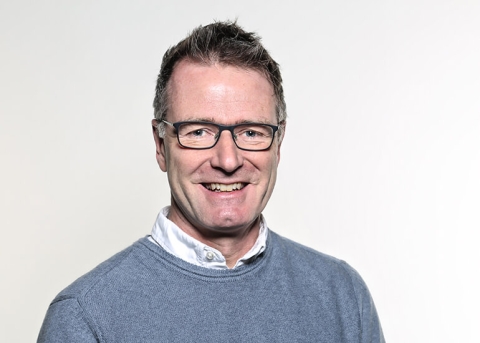

Dr Marius Kwint
Biography
I joined the University of Portsmouth as Senior Lecturer in Visual Culture in 2008 and became Reader in 2013. I work with courses in Architecture and Art and Design, primarily on their historical and theoretical elements. I also supervise PhD theses and help to mentor colleagues in research and practice.
I graduated in 1988 from a new interdisciplinary course in Cultural History at the University of Aberdeen, where I was awarded the Lyon Prize for distinction in finals. I then completed a British Academy-funded DPhil in History at the University of Oxford, with a thesis on the founding of the circus in 18th-century England. This was at Magdalen College, where I received the Richard Selig Prize for poetry and was elected president of the Middle Common Room.
Previous academic roles include tutoring History at Somerville College, Oxford, and lecturing in Cultural Studies at Southampton Institute (now Solent University). In 1996 I held the Douglas W. Bryant visiting fellowship in 18th-century studies at the Houghton Library, Harvard University and then became Senior Research Fellow in History of Design jointly at the Victoria and Albert Museum and Royal College of Art until 1998. For nearly ten years after that, I served as lecturer in History of Art and Fellow by Special Election of St. Catherine's College at the University of Oxford. In this post, I ran the doctoral programme, helped set up a new BA course, devised and taught a popular master's option in history of collecting, and served as Acting Head of Department.
Research interests
I apply cultural history to my exhibition curatorship and working with artists and designers to develop creative ideas. Besides research on the history of popular culture in England during the era of high imperialism and industrialization, as explored in my doctoral thesis and subsequent publications, I have led projects in material culture, collecting and memory, and more recently the relationship of visual culture with the sciences, in particular neuroscience. I have also written many catalogue and monograph essays in contemporary art, especially in areas of transcultural art and globalization. I have curated major international themed exhibitions in museums as well as working on more pinpointed, monographic shows in university galleries and the commercial art sector.
In 2005, I devised and co-curated a major exhibition on the dendritic or form in scientific visual culture at the Museum of Design Zurich, entitled Simply Complex (einfach Komplex). This featured examples of technical imagery and new art commissions and installations. In our CCI Faculty's former SPACE and Eldon galleries in 2010, I organized the exhibition of Beth Fisher’s large-scale figurative drawings about the life-cycle and the family, Grisaille Legacy, on tour from the Royal Scottish Academy. Wellcome Collection then invited me to guest curate its major exhibition Brains: the Mind as Matter, which took place in London in 2012 and was revised for MSI Manchester in 2013. This newly looked at the brain as an artefact of material and visual practices and was the most popular exhibition ever held by Wellcome, attracting over 205,000 visitors over a total of seven months; the associated online game, Axon, got over 3 million plays in the first month and one of our videos surpassed 19 million views before YouTube added a content warning. A revised version of the exhibition has gone onto tour Barcelona, Madrid, Zaragoza, Donostia / San Sebastián, and Seville in Spain.
In 2019, I was awarded a Mid-career Fellowship by the Paul Mellon Centre, London, to research the history of art and neuroscience in Britain partly based on the investigations towards these exhibitions.
At the Venice Biennale in 2015 (the world's premier contemporary art event), I co-curated with Sundaram Tagore an official collateral exhibition Frontiers Re-imagined: Art That Connects Us, in the historic Museo di Palazzo Grimani. Featuring some 44 artists from 25 countries, from emerging talents such as Sasha Huber to masters such as Sebastiao Salgado and Robert Rauschenberg, this exhibition explored art as a means of inter-cultural encounter and fusion. It was one of the most popular and acclaimed events of the Biennale, with The Art Newspaper and other periodicals placing it in the top five of very many in the city that year, and attracting 25,000 visitors.
Other curatorial and commissioning collaborations have included new work by Scottish sculptor Annie Cattrell, FRSA, FRSS, responding to Bernini's baroque sculptural masterpiece Apollo and Daphne in the Borghese Gallery in Rome. Supported by the Henry Moore Foundation, it took shape in 2017 and 2018 as an exhibition alongside Cattrell's permanent public artwork Transformation at the New Science Building, Anglia Ruskin University, Cambridge.
In the Research Excellence Framework (REF) 2021, the above activities were part of my highly rated Impact Case Study, detailing the benefits of my curatorial research practice beyond academia.
More recently, I have been reconsidering my doctoral insights on the relationship of popular culture with imperialism in the light of the current resurgence of bellicose nationalism and the recruitment of higher education by the military-industrial complex. I co-organised the Camouflaging Culture symposium with colleagues Tom Sykes and Stephen Harper in 2021 and, with support from the Joseph Rowntree Charitable Foundation, the conference Teaching Peace: Building Cultures of Non-violence and Demilitarization in Universities in 2024.
Research outputs
2021
Mnemosyne in Purple
Kwint, M.
1 Jul 2021,
Research output: Chapter (peer-reviewed)
